Best Laravel Development Tools to Buy in January 2026
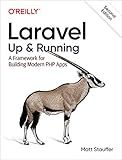
Laravel: Up & Running: A Framework for Building Modern PHP Apps


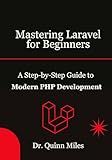
Mastering Laravel for Beginners: A Step-by-Step Guide to Modern PHP Development


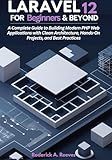
Laravel 12 for Beginners & Beyond: A Complete Guide to Building Modern PHP Web Applications with Clean Architecture, Hands-On Projects, and Best Practices



Mastering the Snowflake SQL API with Laravel 10: A Comprehensive Guide to Data Cloud Integrated Development (Apress Pocket Guides)



The Laravel Survival Guide: Written & Updated for Laravel 5.3


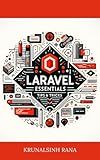
Laravel Essentials: Tips & Tricks for Developers: Master Laravel with Practical Tips for Every Developer


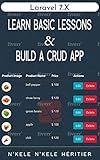
Laravel 7.X : LEARN BASIC LESSONS & BUILD A CRUD APP (PHP Framework)


To get the user object in a comment in Laravel, you can use the following code snippet:
$user = \App\User::find(Auth::id());
This code will retrieve the authenticated user object, which you can then access to fetch relevant information or perform operations on.
What is the most effective way to get user object from comment in Laravel?
One of the most effective ways to get the user object from a comment in Laravel is to use Eloquent relationships. Assuming that you have a Comment model with a user_id field that references the id field of the User model, you can define a relationship in the Comment model like this:
public function user() { return $this->belongsTo(User::class); }
Then, whenever you have a comment object, you can easily retrieve the associated user object by calling the user method on the comment object:
$comment = Comment::find($commentId); $user = $comment->user;
This will automatically fetch the user object associated with the comment based on the user_id field.
How to retrieve user object in Laravel comment securely?
To retrieve the user object in a Laravel comment securely, you can use Laravel's built-in authentication system and follow these steps:
- Use Laravel's authentication middleware to authenticate the user before retrieving the comment. This will ensure that the user is logged in and authorized to access the comment.
- In your controller or wherever you are retrieving the comments, you can use the auth() helper function to retrieve the currently authenticated user. For example:
$user = auth()->user();
- You can then use this user object to retrieve the comments associated with that user. For example, if you have a Comment model with a relationship to the User model, you can retrieve the comments like this:
$comments = $user->comments;
By following these steps and using Laravel's authentication system, you can securely retrieve the user object in a Laravel comment.
What is the impact of performance optimization when retrieving user object in comment with Laravel?
Performance optimization is crucial when retrieving user objects in comments with Laravel, as it can have a direct impact on the overall speed and efficiency of the application. By optimizing the retrieval of user objects, you can reduce the time it takes to fetch this data and improve the overall responsiveness of the application.
Some ways to optimize performance when retrieving user objects in comments with Laravel include:
- Eager loading: By eager loading the user objects when fetching comments, you can reduce the number of queries that need to be executed to fetch this data. This can help improve the overall performance of the application.
- Caching: You can also cache the user objects to reduce the need to fetch this data from the database every time it is needed. By storing user objects in a cache, you can quickly retrieve this data when needed, without the overhead of querying the database.
- Indexing: Ensure that the database tables containing user objects and comments are properly indexed. This can help improve the performance of queries that fetch this data, making the retrieval process faster and more efficient.
- Limiting data retrieval: Only fetch the data that is necessary for the application to function. Avoid fetching unnecessary data or loading relationships that are not needed, as this can increase the load on the database and slow down the application.
By following these performance optimization techniques, you can improve the overall speed and efficiency of retrieving user objects in comments with Laravel, providing a better user experience for your application.
What is the simplest way to retrieve user object in Laravel comment?
The simplest way to retrieve a user object in a Laravel comment is to use the auth() helper function. You can access the currently authenticated user with auth()->user(). This will give you the authenticated user object which you can then use to access any properties or relationships of the user.
What is the step-by-step process to get user object from comment in Laravel?
To get the user object from a comment in Laravel, you can follow these steps:
- Define a relationship between the Comment and User models:
In your Comment model, define a relationship method that specifies the relationship between the Comment model and the User model. For example, if each comment belongs to a user, you can define a "user" method like this:
public function user() { return $this->belongsTo(User::class); }
- Retrieve the comment and eager load the user relationship:
To retrieve a specific comment and get the associated user object, you can use the with() method to eager load the user relationship. For example:
$comment = Comment::with('user')->find($commentId);
- Access the user object from the comment:
Once you have retrieved the comment with the user relationship eager loaded, you can access the user object using the user property of the comment object. For example:
$user = $comment->user;
Now you have access to the user object associated with the comment. You can access any properties or methods of the user object as needed.
